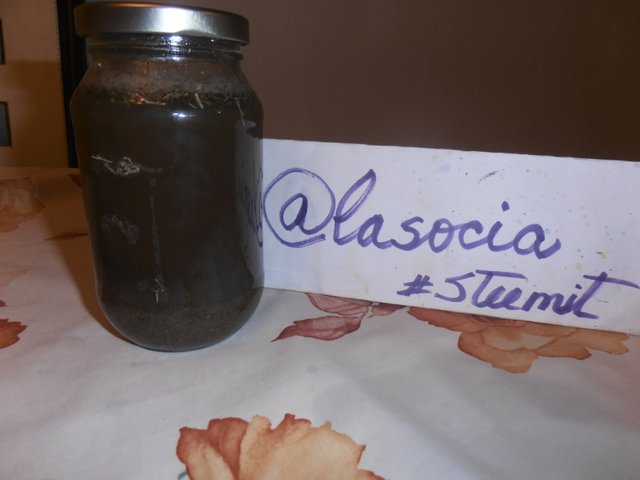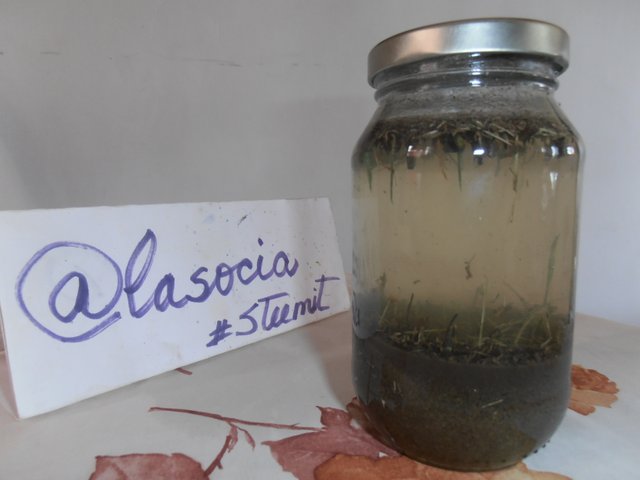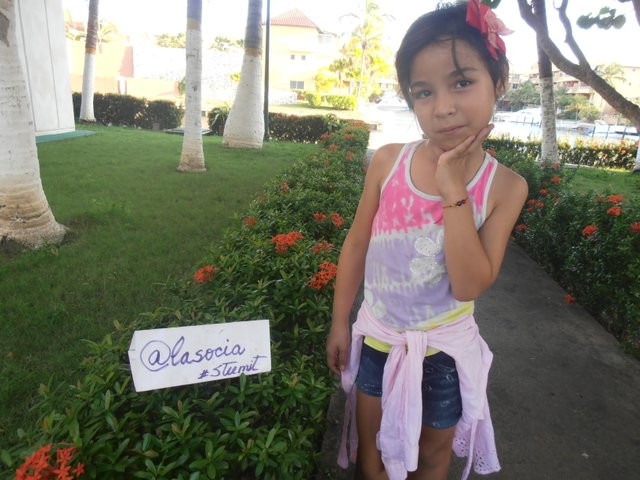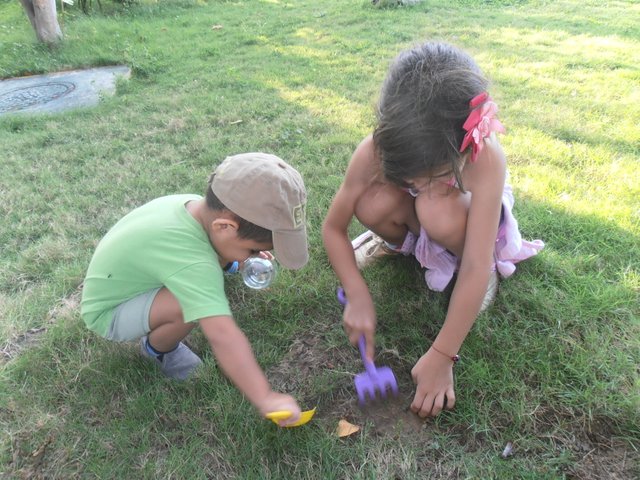We put the water, close and do a little exercise!
 After shaking for a few minutes, the sand falls to the bottom right away.
After shaking for a few minutes, the sand falls to the bottom right away.
 The soil particles have been ordered by size. And the organic remains float!
The soil particles have been ordered by size. And the organic remains float!
What happen?
When the jar is shaken, the different particles that make up the soil mix with the water. As soon as the jar is at rest, these particles in suspension, begin to settle in the bottom, starting with the heaviest ones and ending with the lightest ones. After a while we can see the different layers and the organic matter floating in the water. The texture of the soil, together with the climate of a place, helps us to decide what type of crop is most suitable in that area.
A sandy soil is very porous and does not retain water or nutrients, but nevertheless very well aerates the roots. When it rains, puddles do not form because the water seeps in. A clayey soil is very compact due to the small size of the particles. That is why it retains water and nutrients and does not let air through. The puddles are formed quickly. The silty soils have intermediate characteristics. The right combination of the three will give us the ideal soil for each plant and climate.
The soil sustains life on Earth. Plants live in it, that's why it's so important to keep it.
 Children love to do experiments. With them, while having fun, they learnand ask questions about the world around them. Among its many benefits, scientific exploration feeds the child's natural curiosity, fosters his interest in science, stimulates reasoning and logic, improves his ability to solve problems, increases his self-esteem and prepares them to understand more complicated scientific concepts in the future.To enjoy science is not necessary to have a laboratory, you will be surprised by the amount of experiments that can be done with some home materials. So do not wait any longer, get to work and have fun with your children or students.I hope that this article has been of your interest and help, and I hope you in my next publication.
Children love to do experiments. With them, while having fun, they learnand ask questions about the world around them. Among its many benefits, scientific exploration feeds the child's natural curiosity, fosters his interest in science, stimulates reasoning and logic, improves his ability to solve problems, increases his self-esteem and prepares them to understand more complicated scientific concepts in the future.To enjoy science is not necessary to have a laboratory, you will be surprised by the amount of experiments that can be done with some home materials. So do not wait any longer, get to work and have fun with your children or students.I hope that this article has been of your interest and help, and I hope you in my next publication.
 Regards!!!
Regards!!!

<
Posted from my blog with https://wordpress.org/plugins/steempress/ http://lasocia.vornix.blog/2018/10/05/science-at-home-fun-homemade-experiments-for-the-little-ones-lets-learn-about-soil-texture/ 







Dear friend, you do not appear to be following @wafrica. Follow @wafrica to get a valuable upvote on your quality post!
Hello beautiful community of @wafrica, you have absolutely reason I had overlooked that! I already start following them! Regards!
This looks fun! Will try this out with my little ones :)
Hello :)
Stopping by from @steemitmamas!